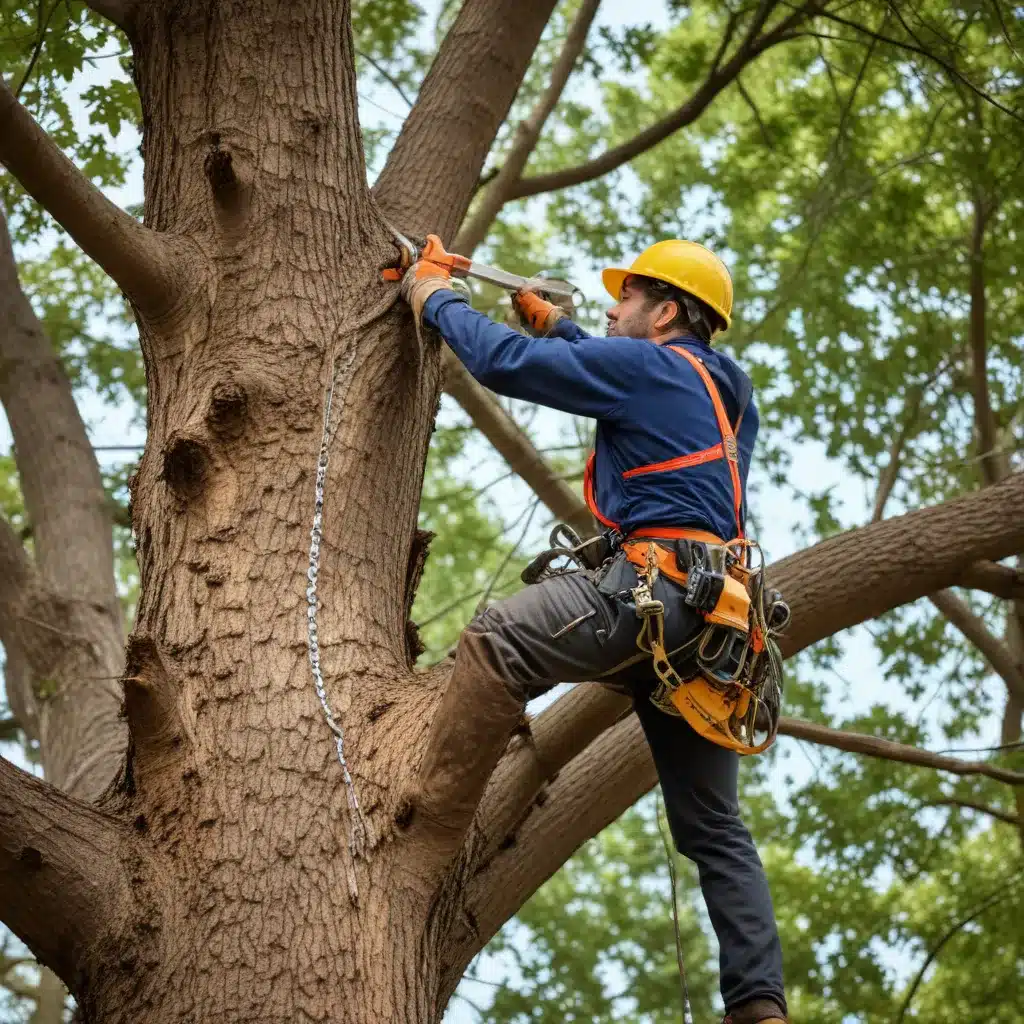
As a tree care specialist at TriCounty Tree Care, I’ve had the privilege of witnessing the profound impact that responsible tree removal can have on both residential and commercial properties. While the decision to remove a tree is never one to be taken lightly, there are strategic approaches that can help homeowners and businesses capitalize on the benefits while minimizing the environmental and ecological consequences.
Tree Removal Considerations
Determining whether a tree should be removed requires a thorough assessment of various factors. Arborists carefully evaluate the tree’s health, structural integrity, and potential hazards to the surrounding area. Factors such as disease, pest infestations, storm damage, and root encroachment can all necessitate the need for removal to ensure public safety and protect nearby structures.
An equally important consideration is the environmental impact of tree removal. Responsible tree care specialists prioritize maintaining the delicate balance of the urban ecosystem, recognizing that trees play a vital role in carbon sequestration, air purification, and habitat provision. By conducting a comprehensive environmental impact assessment, we can identify opportunities to preserve the ecological benefits while addressing the practical needs for tree removal.
Tree Removal Strategies for Homeowners
For homeowners, maintaining the health and longevity of residential trees is a crucial aspect of responsible landscape management. Regular pruning, fertilization, and pest management can often extend the life of a tree, reducing the need for removal. However, in cases where a tree poses a genuine threat, proactive removal is the prudent course of action.
Hazardous tree identification is a critical skill for homeowners to develop. Recognizing signs of structural weakness, decay, or disease can help prevent catastrophic failures that could endanger lives and property. Engaging the services of a qualified arborist can provide invaluable guidance in assessing the risks and determining the appropriate course of action.
Tree Removal Strategies for Businesses
In the commercial realm, urban forestry planning is essential for managing the complex relationship between trees, infrastructure, and business operations. Landscape architects and urban foresters work closely with business owners to develop comprehensive strategies that balance the needs of the urban environment with the practical requirements of commercial properties.
Tree removal in a commercial setting may be necessary to accommodate new construction, mitigate risks to buildings and utilities, or enhance pedestrian and vehicle access. However, businesses should strive to adopt a holistic approach that prioritizes the long-term sustainability of the urban canopy. This may involve strategic replanting, species diversification, and habitat restoration initiatives to maintain the ecological balance.
Sustainable Tree Removal Practices
As responsible stewards of the environment, both homeowners and businesses should strive to adopt sustainable tree removal practices that minimize the impact on the local ecosystem.
Ecological Preservation Approaches
When trees must be removed, it is crucial to consider their role in supporting biodiversity and habitat conservation. Arborists work to identify opportunities to relocate or transplant healthy trees, ensuring the continuity of ecological functions. Additionally, they may recommend the preservation of snags (standing dead trees) or the creation of wildlife refuges to provide shelter and nesting sites for local fauna.
Waste Reduction Techniques
The responsible disposal of tree waste is another essential component of sustainable tree removal. Wood recycling programs, such as those offered by TriCounty Tree Care, transform removed trees into valuable resources, such as mulch, firewood, or biofuel. By diverting waste from landfills, we can reduce the environmental impact and promote the circular economy.
Regulatory and Legal Aspects
Navigating the complex web of local tree removal ordinances and regulations is a critical aspect of responsible tree management. Homeowners and businesses must be aware of the permit requirements, compliance guidelines, and any protected tree species within their jurisdiction.
Local Tree Removal Ordinances
Many municipalities have established tree preservation and removal policies to ensure the long-term health of their urban forests. These regulations may stipulate the conditions under which a tree can be removed, the required mitigation measures, and the process for obtaining the necessary permits. Adhering to these guidelines is essential to avoid potential legal consequences and maintain the community’s ecological balance.
Liability and Risk Management
Tree removal also carries inherent liability and risk considerations. Homeowners and businesses must carefully assess the potential for property damage, personal injury, and utility disruption that may arise from the removal process. Engaging the services of licensed and insured tree care professionals, as well as maintaining appropriate insurance coverage, can help mitigate these risks and protect against potential legal and financial repercussions.
Economic Advantages of Tree Removal
While the environmental and ecological aspects of tree removal are of paramount importance, there are also economic benefits that homeowners and businesses can leverage through strategic tree management.
Cost-Effective Maintenance
Proactive tree removal can often lead to long-term cost savings by preventing expensive structural damage, utility repairs, and liability claims. Additionally, the removal of hazardous or diseased trees can enhance property values and reduce the ongoing maintenance costs associated with their upkeep.
Renewable Resource Utilization
The wood and biomass generated from tree removal can be repurposed into valuable timber products or biofuel sources, generating additional revenue streams for homeowners and businesses. By embracing these renewable resource utilization opportunities, we can transform the challenges of tree removal into economic advantages.
In conclusion, the decision to remove a tree is a complex one, requiring a delicate balance of environmental, ecological, and economic considerations. By adopting a comprehensive and sustainable approach, homeowners and businesses can capitalize on the benefits of tree removal while minimizing the impact on the local ecosystem. Through the strategic application of arboricultural best practices, collaboration with tree care professionals, and adherence to regulatory guidelines, we can collectively contribute to the long-term health and resilience of our urban forests.


